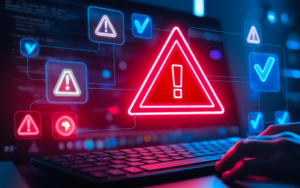Poor System Design and Planning
One of the primary causes of technology failure is inadequate design and plan. When systems are constructed without having a complete understanding of user requirements as well as the environment and capacity, they are more likely to face difficulties. For example a poorly-designed application might crash under heavy loads or fail to work to other platforms. A lot of tech products are released without adequate testing or considering actual scenarios. Avoiding such a disaster is a careful approach to design thorough plan, and testing under real-world conditions prior to deployment.
Inadequate Testing Before Launch
The rush or skipping the testing process can cause major tech problems. Software that’s not thoroughly tested can have security flaws or bugs that could cause the system fail or be vulnerable. Additionally, hardware that hasn’t been tested in a variety of conditions could fail unexpectedly. Engineers and developers are often working with tight deadlines that can result in a lack of testing. To avoid this, organizations must focus on robust testing methods which include the beta test, quality control, and simulation of the worst-case scenario.
Human Error and Misuse
Human error is a major reason for technology failure. It can be caused by inadequate configuration, incorrect data entry, improper handling of devices, and improper application of software. Even the most well-designed systems may fail if users are unable to use them in a proper manner. Sometimes, employees aren’t properly trained to operate a new system, resulting in errors that could be avoided. To prevent this kind of error requires proper instruction, clear documentation along with user-friendly, intuitive interfaces. It is also about fostering an environment where employees are able to report issues early, before they become more serious.
Lack of Maintenance and Updates
Like all other tools technology requires periodic maintenance and updates to work correctly. Software requires patches to fix security and bug issues. Hardware components may get worn out or outdated with time. A lot of failures occur because companies fail to update their systems or upgrade their infrastructure. This can result in failures, data loss as well as security breach. To avoid this, companies must establish regular maintenance schedules as well as conduct audits and set up automated update systems whenever possible.
Cybersecurity Threats and Vulnerabilities
In the digital age cybersecurity threats are the primary reason for technology malfunctions. Hackers exploit weaknesses in systems to steal information or disrupt operations. They can also get control over critical infrastructure. These attacks could cause widespread interruptions and financial losses. Most cybersecurity attacks are a result of insecure passwords, outdated software, or ineffective security protocols. To prevent such incidents, you must invest in security measures that are strong by using secure authentication methods and regularly updating the systems to fill security gaps.
Overreliance on Single Systems
Dependence on one service or system can cause massive problems if the system fails. This can be seen most often in companies that depend on just one server, app as well as cloud services. If that system encounters an issue, the entire operation could come to abrupt halt. This kind of error is particularly dangerous since it impacts multiple processes at the same time. The best way to prevent this is by using backups, redundancy, as well as failover systems. It’s a good idea to have backup options available to be used in the event that a primary system malfunctions.
Environmental and Physical Damage
Sometimes technology malfunctions because of physical damage or environmental influences like dust, water extreme temperatures, power interruptions. Hardware that’s not designed to withstand specific conditions may fail or even be destroyed. Natural disasters, like floods and earthquakes may also harm infrastructure. A lot of these problems are preventable with surge protectors, protective casings in climate-controlled zones, as well as plan for disaster relief. Physical security is equally vital as digital security in making sure technology is running at a high level.
Incompatibility Between Systems
As technology advances the software and systems are usually upgraded or replaced. Sometimes, the latest technology isn’t compatible with the existing system which can lead to problems with compatibility. As an example, updating the functionality of one part of a system could result in it failing to communicate properly with another component. Such failures could cause the loss of data, system crashes or an incorrect output. In order to avoid compatibility issues, you must conduct extensive integration testing and ensuring that updates are backward compatible or synchronized properly with other components of the system.
Insufficient Training and Support
Even the most sophisticated technology could fail if users of it are not adequately trained. If they lack the skills to operate, troubleshoot or maintain the equipment, users are likely to make mistakes, or overlook warning indications of failure. Lack of technical support can increase the chance of problems that are not resolved. In order to prevent this from happening, it is a matter of investing in training courses, making user guides as well as providing timely technical assistance. Employees must feel comfortable using technology and be aware of which direction to turn to in the event of a problem.
Conclusion
Failures in technology are not always due to bad luck. In many instances it’s due to inadequate plan, insufficient upkeep, human errors or simply ignoring crucial indications. The good news is that most failures can be prevented with the right systems in place. An effective design, careful testing, regular updates solid security, and training can greatly lower the chance of failure. Technology can be a very powerful instrument when properly managed however, it requires careful attention, consideration and a keen eye. When you understand the main causes that cause failure and using the appropriate prevention strategies, both individuals and companies can benefit from greater reliability and efficiency in technology.
FAQs
1. What’s the single most frequent cause of technology failure?
The most frequent cause can be human error like improper configurations, misuse or a lack of education.
2. How can failures in technology be avoided?
In the event of a failure, it is possible to prevent them by a well-planned plan regular maintenance, appropriate testing and investing in cybersecurity training and staff development.
3. What is the reason testing becomes so important in the process of technology development?
Testing can help identify and correct flaws or bugs prior to deployment, which reduces the chance of failure when using the system in real-world situations.
4. What can updates do to avoid the technology from failing?
Updates correct security flaws enhance performance and allow compatibility with other systems. This aids in preventing breakdowns.
5. Can failures in technology be prevented completely?
Although not every failure can be prevented, the majority are able to be reduced or prevented by taking proactive steps and plan.



